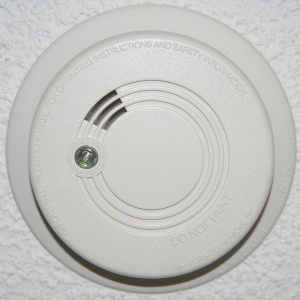

Photo by TopQuark22 is licensed under CC BY 2.0
French philosopher Voltaire said, “With great power comes great responsibility.” The same is true for data gathering – “with big data comes great responsibility.”
Data, especially metadata, is a hot topic. Congress is arguing about whether to allow governmental entities to collect and store phone records. Some believe it infringes on the right of privacy, but others contend it must be done in the interest of national security. Governmental entities are now collecting an abundance of personal data and that frightens and frustrates some individuals.
Deciding how to protect, secure, access and use personal data raises many issues. But, no matter where you stand on the issue of privacy, it’s clear that mass collection of data is contributing to some good outcomes.
Data analytics is the dissection of massive amounts of data with the goal of eliminating irrelevant information to reveal useful data that can be applied to decision-making. By using data analytics, billions of rows of data can be converted to real and relevant facts in a very short period of time.
Public executives throughout the United States have started making decisions, developing regulatory guidelines and launching programs based on data analytics to improve public health, reduce crime, protect children and save taxpayers money. A McKinsey report states that by digitizing information, disseminating public data sets and applying analytics to decision- making, government can potentially contribute trillions in economic value.
Here’s an example of a good outcome that resulted from analytics. From 2010 to 2014, the city of New Orleans recorded 22 deaths as a result of building fires. In an effort to prevent further deaths, the city launched an initiative dubbed “Target Smoke Alarm Outreach.” This seemed appropriate because data showed that most of the deaths occurred in buildings where residents had no smoke alarms.
The project involved collecting data from surveys, census reports, public records and information from the New Orleans Fire Department. Then, by using data analytics, programmers isolated the greatest predictors of whether residential structures had a firm alarm – the structure’s age, income levels of the inhabitants and the duration of time people had lived in the structure. Data analytics provided areas of high risk for fires and pinpointed the age of inhabitants. The end result was that the fire department began delivering free fire alarms to citizens most susceptible to being harmed by a fire. The alarms were provided by the American Red Cross and the Louisiana State Fire Marshal’s Office.
In Chicago, data analytics were used to protect public health by ensuring food safety in restaurants. The city implemented a data-driven approach to streamline health inspections. Past data was analyzed to identify variables associated with health code violators. The city then created a model, carried out a simulation and revamped its regulatory inspection processes. Now, health inspections are conducted according to data that prioritizes restaurants most likely to violate health codes. The city of Chicago believes its citizens are now safer from food-borne illnesses.
Indiana uses analytics in numerous ways – to attract new investment to the state, to increase high school graduation rates and to improve the workforce. As governmental entities gain new insights through data analytics, costs will be reduced and better decisions will be made. The trend is just emerging, but it is coming on strong. Expect many more data-driven initiatives- especially ones related to school attendance, air quality, crime prevention, traffic patterns and weather precautions.
Want to learn more about the security of our personal data or read more from Mary Scott Nabers? Check her blog every Wednesday and Friday for a new article!
